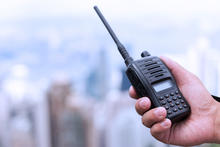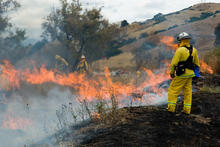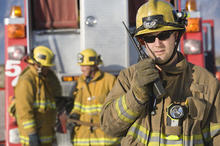New Wireless Networks Division Publication!
Test Scenarios for Mission Critical Push-To-Talk (MCPTT) Off-Network Mode Protocols Implementation
New documentprovides both an overview and technical details of test scenarios for checking the protocol implementation of the 3rd Generation Partnership Project (3GPP) defined off-network mode operations of mission critical push-to-talk (MCPTT) - covering floor control, call control, and call type control. This report includes test scenarios for basic group calls, broadcast group calls, and private calls. Download it now.
Paper Authors:
Priam Varin, Yishen Sun, Wesley Garey
NIST Wireless Networks Division (WND)
While public safety agencies are increasingly relying on video and data communication, voice remains the most critical means of communication for first responders in emergency situations and cannot be compromised. To achieve public safety grade push-to-talk (PTT) voice quality, 3GPP has developed Mission Critical push-to-talk (MCPTT) technology.
When mission critical voice (MCV) communication is needed while first responders are out of Long Term Evolution (LTE) network coverage or when the network coverage is very weak, public safety users must operate in MCPTT off-network mode allowing them to communicate directly with each other. Although the relevant 3GPP Release-13 specifications were officially completed in March 2016, quite a number of change requests (CRs) were submitted to LTE work groups to correct errors. New features and enhancements of existing functionalities were discussed for Release 14 and Release 15, as well.
Since 2016, WND has been supporting 3GPP standardization work by evaluating the completeness and correctness of MCPTT off-network mode. WND has developed an MCPTT off-network mode model in the ns-3 network simulator available on NIST’s github (https://github.com/usnistgov/psc-ns3). Major features of this model include basic group call capability, broadcast group call capability, private call capability, floor control, call control, call type control, and emergency alert. To check the correctness of the protocol implementation defined in that ns-3 model, WND has designed over 60 test scenarios for MCPTT off-network mode operations. These test scenarios were used to check WND's implementation of the MCPTT off-network mode protocols using ns-3 simulation tool as well as confirm issues identified in the standard and reported to 3GPP. These test scenarios are based on the 3GPP MCPTT off-network mode protocols and are not ns-3 specific. Therefore, there are potential benefits of utilizing these test scenarios to verify the MCPTT off-network mode protocol implementations in other embodiments, e.g., prototype or commercial devices.
Future revisions of this publication may include additional scenarios.
Download the full publication PDF , and visit the Mission Critical Voice Publications page for additional resources.




